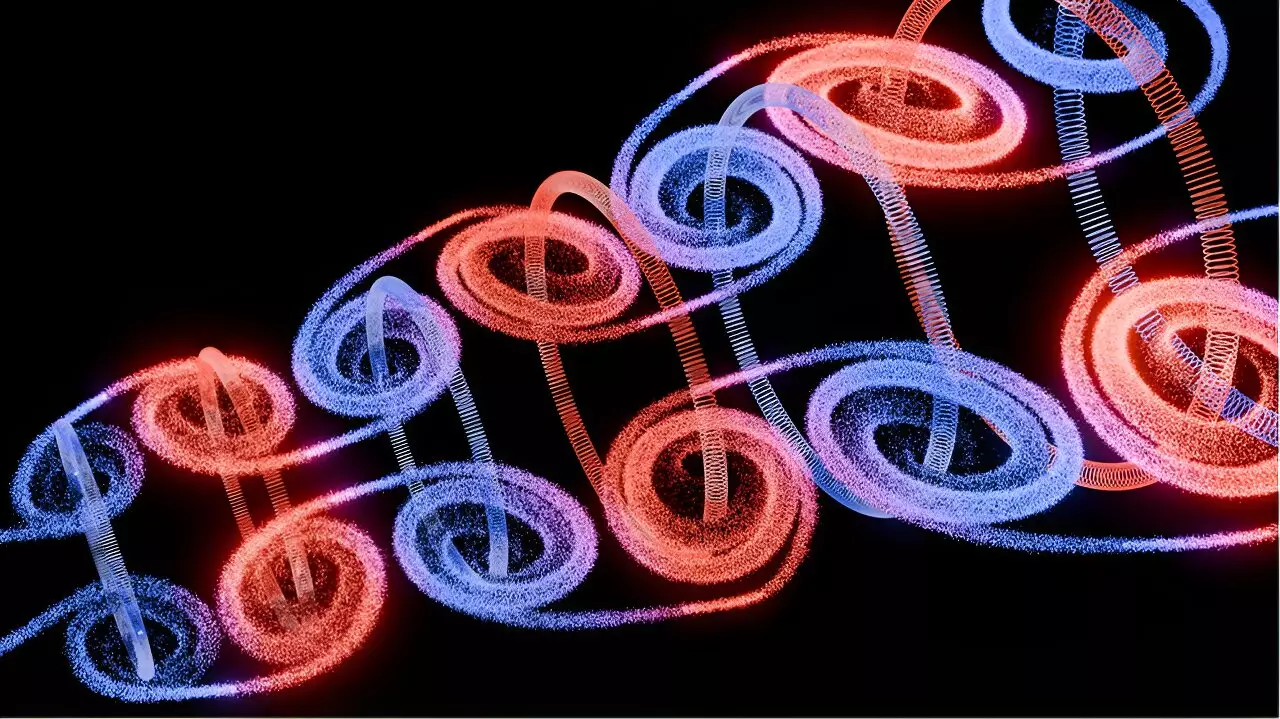A recent study published in Nature Communications by physicists from Singapore and the UK has unveiled a groundbreaking optical phenomenon analogous to the traditional Kármán vortex street (KVS). This optical KVS pulse showcases intriguing similarities between fluid dynamics and the energy flow of structured light. Lead author Yijie Shen of Nanyang Technological University describes the newly introduced light pulse as possessing a field structure reminiscent of the vortices observed in fluid dynamics, which are responsible for phenomena like the ‘singing’ of suspended telephone lines in wind. The structured light exhibits a robust topological structure of skyrmions in condensed matter, setting the stage for a new era of exploration in optical physics.
Unlike previous studies on optical skyrmionic beams and pulses, the nondiffracting supertoroidal pulses (NDSTPs) in this research defy the limitations of diffraction and remain intact over arbitrary distances. This unique characteristic opens up a myriad of potential applications in fields such as light-matter interactions, super resolution microscopy, and metrology. Skyrmions, originally conceptualized as topological particles by Tony Skyrme in the 1960s, exhibit magnetic vortices at the nanoscale with intricate textures. The proposed light pulses represent a significant departure from existing optical skyrmions, as they maintain their structural integrity during propagation, offering new insights into the dynamics of skyrmionic fields.
The researchers speculate that the deeply subwavelength singularities within the optical pulses could revolutionize metrology and spectroscopy practices, especially in studying toroidal excitations in matter. Furthermore, the potential for long-distance information transfer encoded within the topological features of the pulses hints at applications in telecommunications, remote sensing, and LiDAR technology. The intricate interplay between the KVS in fluid flows and the optical pulse underscores the seamless connection between physical phenomena and technological advancements.
The Kármán vortex street, a classical pattern of swirling vortices, has captivated scientists and artists alike for its mesmerizing aesthetics and potent energy. From paintings depicting vortices behind figures to real-world events like the Tacoma Narrows Bridge disaster, the influence of the KVS stretches across disciplines. Theodore von Kármán’s pioneering work on vortex streets, inspired by art depicting St. Christopher crossing a river, exemplifies the intersection of science and the humanities. The infamous collapse of the Tacoma Narrows Bridge in 1940 serves as a stark reminder of the power wielded by KVS-generated vibrations and resonance, highlighting the need for a deeper understanding of these fluid dynamics.
The discovery of the optical Kármán vortex street represents a significant advancement in the field of light physics, promising a wealth of applications and insights into the behavior of structured light. By drawing parallels between fluid dynamics and energy flow in light, researchers have uncovered a novel avenue for exploration and innovation. As technology continues to push the boundaries of what is possible, the optical KVS pulse stands as a testament to the intricate dance between nature-inspired patterns and human ingenuity.


Leave a Reply